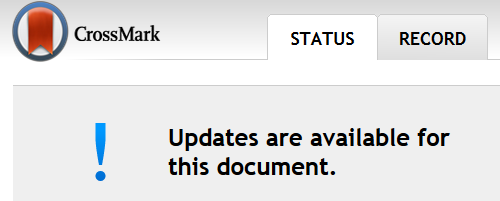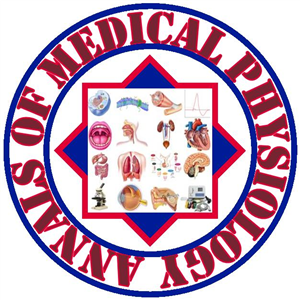Update policy
Update policy
All articles published in Annals of Medical Physiology bear a Digital Object Identifier (DOI) registered with Publishers International Linking Association, Inc. (PILA), New York, USA doing business as (d/b/a) Crossref.
All content, including manuscripts and their dependent/supplemental files, that have not (yet) passed peer review, is stored in Annals of Medical Physiology journal workflow of OJS platform. All submitted manuscript undergoes plagiarism check by Similarity Check (powered by iThenticate), a service provided by Crossref. All versions of articles that have passed peer review, accepted and published will be archived in Annals of Medical Physiology Archives page.
Updates before publication
Authors can revise, change and update their manuscripts and associated metadata by submitting revised manuscript, which are added to the article’s history; however, the published versions cannot be withdrawn and are available on the Annals of Medical Physiology website.
Updates after publication
Annals of Medical Physiology participates in the CrossMark service from Crossref, that provides a standard way for readers to locate the current version of a piece of content.
By clicking the Crossmark button, readers can determine whether changes have been made after publication. By applying the CrossMark policies, Annals of Medical Physiology is committed to maintaining the content it publishes and to alerting readers to changes if and when they occur.

Clicking on the CrossMark logo (at the top of each Annals of Medical Physiology article) will give readers the current status of an article and direct you to the latest published version; it may also give you additional information such as article's important date.
In order to maintain the integrity and completeness of the scholarly record, the following policies will be applied when published content needs to be modified; these policies take into account current Principles of Transparency and Best Practice in Scholarly Publishing:
Correction to an article
Addendum, Clarification, Corrections, Corrigendum or Erratum are published to alert readers to errors in the article that became apparent following the publication of the peer-reviewed, copyedited, author-proofed article. Sometimes, the corrected article may be published as new version if considerable portion of manuscript requires modification.
Retraction
Articles may be retracted for several reasons in accordance of the retraction guidelines of Committee on Publication Ethics (COPE), including:
- honest errors reported by the authors (for example, errors due to the improper labeling of samples or use of a study tool or apparatus that is found subsequently to be faulty)
- research misconduct (data fabrication, data falsification, manipulation)
- duplicate or overlapping publication
- fraudulent use of data
- clear plagiarism
- unethical research
For any retracted article, the reason for retraction and who is instigating the retraction will be clearly stated in the retraction notice. The retraction notice will be linked to the retracted article (which usually remains on the website) and the article will be clearly marked as retracted (including the PDF).
An article is usually only retracted at the authors’ request or by the editor in response to an research/publication misconduct investigation. It is important to note that a retracted article is not ‘unpublished’ or ‘withdrawn’ in order for it to be published elsewhere. The reasons for retraction are usually so serious that the whole study, or large parts of it, are not appropriate for inclusion in the scientific literature anywhere.
The content of a retracted article would only be removed where legal limitations have been placed upon the copyright holder (publisher in this case) or journal or if the article is clearly defamatory or infringes others’ legal rights or if the article is the subject of a court order. In such cases, the bibliographic information for the article will be retained on the site along with information regarding the circumstances that led to the removal of the content.
Under rare circumstances, for example, if false or inaccurate data have been published that, if acted upon, pose a serious health risk, the original incorrect version(s) may be removed and a corrected version published. The reason for this partial retraction would be clearly stated on the latest version.
Editorial note
If there is a potential, not yet resolved, problem with an article, it may be appropriate to alert readers with an Editorial note. Such an Editorial note may be added, for example, if Annals of Medical Physiology receives information that research or publication misconduct might have taken place, or that there is a serious dispute between authors or between the authors and third parties. The Editorial note will usually be posted in announcement section while further investigations take place and until a more permanent solution has been found (e.g. the publication of a ‘corrected’ version, or a 'retraction').
Expression of concern
In rare cases, Annals of Medical Physiology may decide to publish an Expression of concern, which is linked to the problematic article, if there are serious concerns about an article but no conclusive evidence can be obtained that would unequivocally justify a retraction. This may include:
- if there is inconclusive evidence of research or publication misconduct
- if there is evidence that there are problems with the article, but the authors’ institution will not investigate the case
- an investigation into alleged misconduct has not been impartial or conclusive






